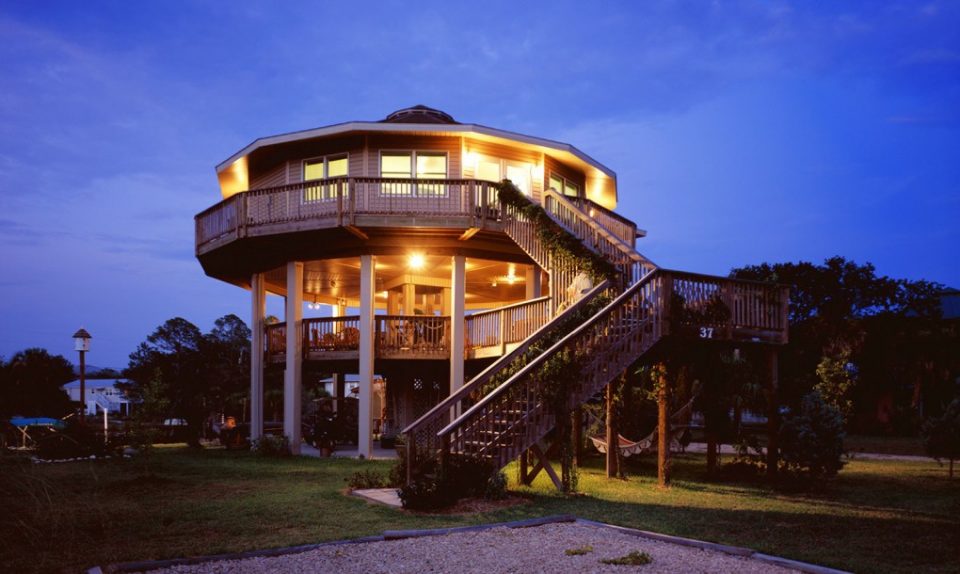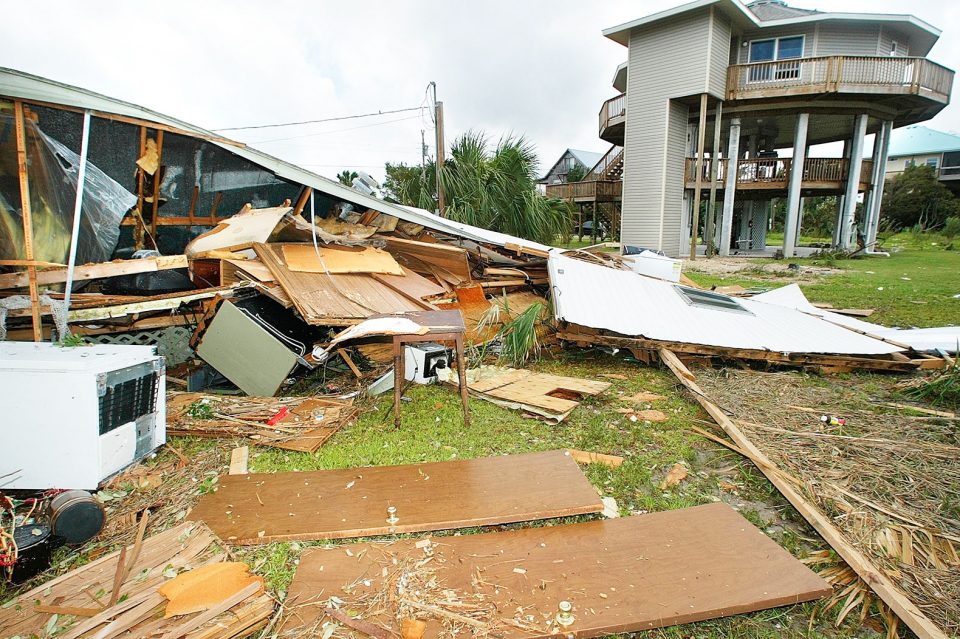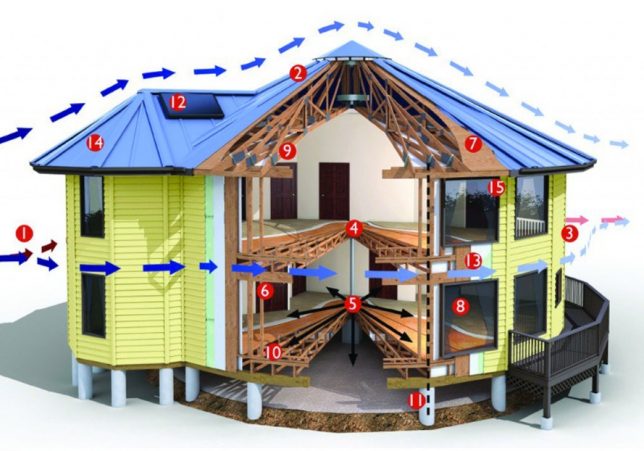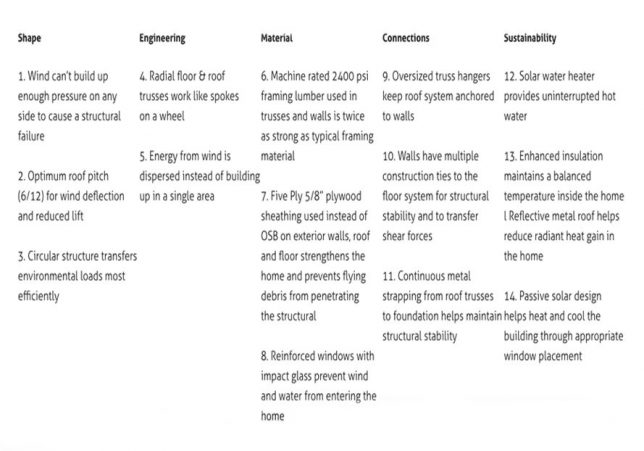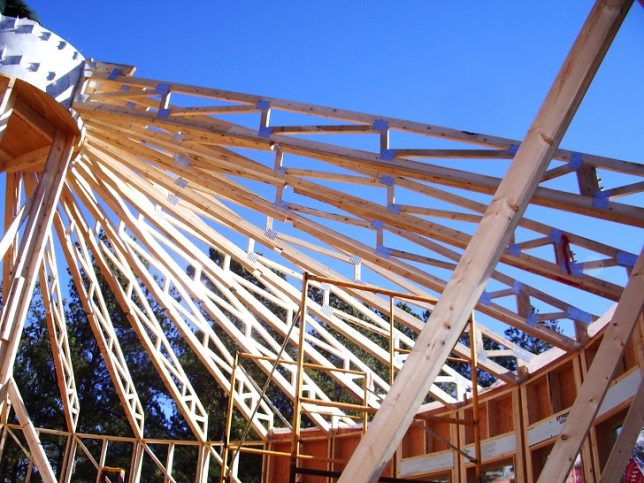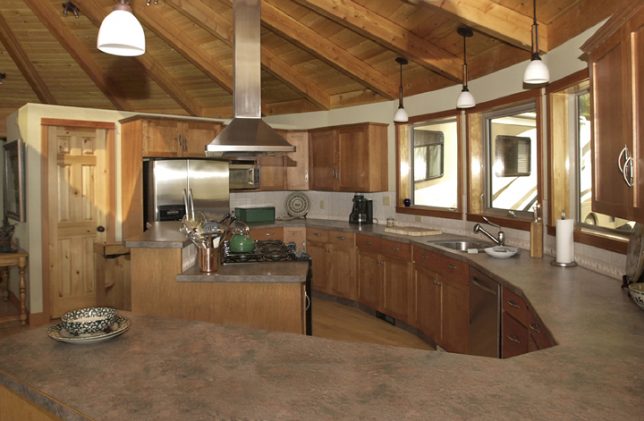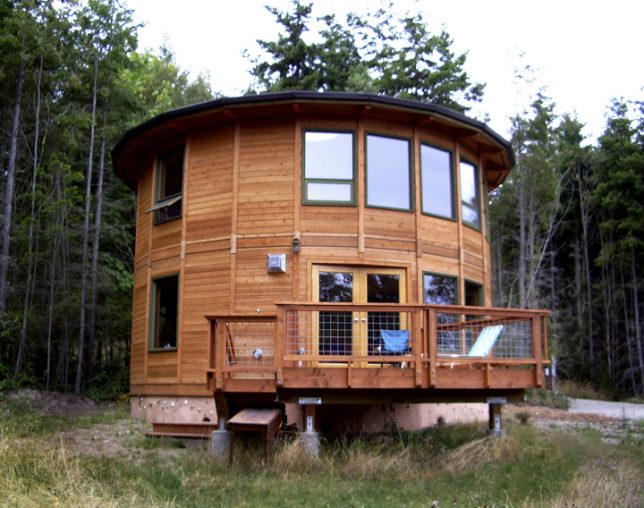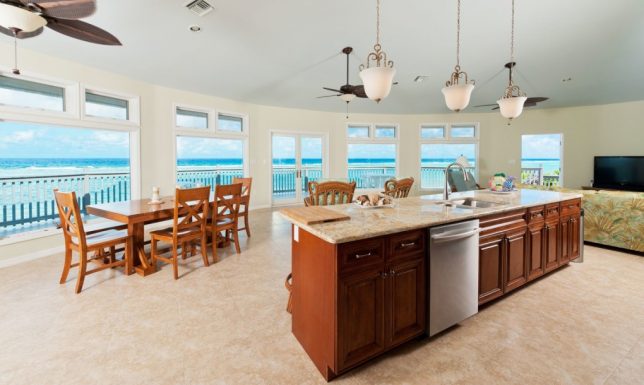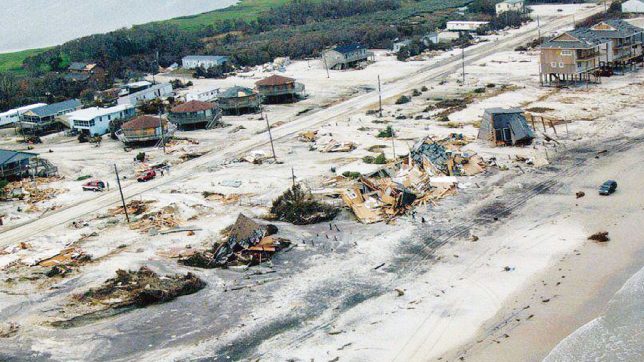Combining the physical benefits of circular plans with the practicality of straight lines and corners, octagonal houses are uniquely positioned to resist hurricanes, tsunamis and earthquakes that threaten coastlines.
Rounded habitats have a long history, from tipis and yurts through the geodesic domes of Buckminster Fuller. Indeed, round homes make sense for a lot of reasons. They have less surface area, which means they require less construction material and have greater energy efficiency, for instance. Critically, rounded homes are also ideal for resisting extreme weather (above: a regular home destroyed in a storm and a surviving semi-round house).
Flat sides pose a significant structural risk during hurricanes and tsunamis. It is much easier for wind and water to flow around a round house than a square or rectangular one.
In modern rounded house designs, radial floor and roof trusses meet in a center ring like spokes on a wheel and thus lock the building in a constant state of compression, which further reinforces its structural integrity. This approach also helps them resist earthquakes.
Of course, fitting furniture along the edges of a truly round house can be frustrating. The space and materials saved are nice, but the usability of the resulting spaces is diminished.
Today, many round-house makers opt for a middle ground and go with octagonal floor plans (or other variants with more than four sides). Doubling the number of walls, this represents the best of both worlds in many ways. These are easier to construct with contemporary materials and techniques, but still take advantage of wind- and water-resistance found in edge-less dwellings.
Deltac, one manufacturer of such semi-round structures, boasts that none of their 5,000 homes built to date has been knocked down by nature. These kinds of homes also have an added benefit for those living along coasts, where storms are a great thread: their shapes provide seaside dwellers with amazing panoramic views (images via Deltac and Cayman).
